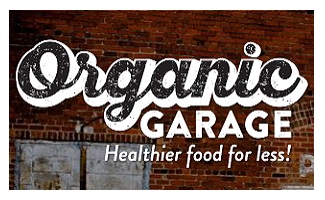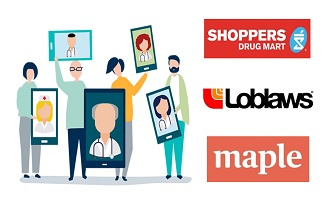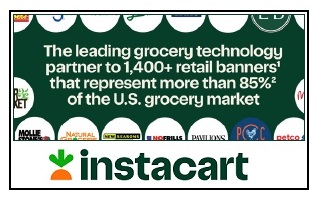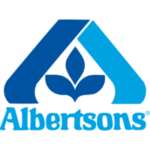 Albertsons is the second largest grocery chain in the U.S. with over 2,200 stores in 34 states. Headquartered in Boise, Idaho, the Company operates under twenty well-known banners including Albertsons, Randall and Safeway.
Albertsons is the second largest grocery chain in the U.S. with over 2,200 stores in 34 states. Headquartered in Boise, Idaho, the Company operates under twenty well-known banners including Albertsons, Randall and Safeway.
Previously one of America’s largest private companies, Albertsons was backed by New York based, private equity firm, Cerberus Capital Management. Cerberus started investing in Albertsons in 2006 and has grown the grocery chain through acquisitions, including the $9.2 billion acquisition of Safeway in 2014.
IPO in the Midst of a Global Pandemic
On June 26, amid the global pandemic, Albertsons debuted on the NYSE under the ticket ACI in the largest U.S. grocery store IPO. A syndicate of 24 investment banks underwrote the IPO including Bank of America (NYSE: BAC), Goldman Sachs (NYSE: GS), JP Morgan (NYSE: JPM) and Citigroup (NYSE: C).
 The U.S. grocery chain first planned to go public in 2015 after completing the merger with Safeway but faltered as investors were concerned about the Company’s debt levels. In 2018, Albertsons tried to go public as part of a merger with Rite Aid Corporation (NYSE: RAD) but Rite Aid shareholders voted down the deal as they believed it undervalued their company.
The U.S. grocery chain first planned to go public in 2015 after completing the merger with Safeway but faltered as investors were concerned about the Company’s debt levels. In 2018, Albertsons tried to go public as part of a merger with Rite Aid Corporation (NYSE: RAD) but Rite Aid shareholders voted down the deal as they believed it undervalued their company.
Albertsons’ IPO by the Numbers
The Company initially planned to raise up to $1.3 billion, finally raised $800 million:
- The IPO was price at $16 per share, below the filing price in the $18-$20 per share range.
- Number of shares was cut to 50 million shares from the 65.8 million anticipated.
- Valued the Company at approximately US$9.3 billion
A string of grocery chain bankruptcies in recent years, A&P/Pathmark and Marsh Supermarkets, as well as, the uncertain times brought by the current health crisis, prevented Albertsons’ IPO from getting the necessary investor traction.
Vivek Sankaran argues that the lower price reflects the volatility of the market, not the strength of the company. “We are just proud that in this extremely difficult environment, in the middle of a pandemic, we were able to IPO the company”. He remained proud and optimistic about the future of the company when he joined CNBC’s “Squawk Alley” to discuss Albertsons big debut on the New York Stock Exchange.
Currently, Albertsons is trading at an EV/EBITDA of 7.5x which is lower than the industry average of 9.9x, potentially undervalued compared to its peers.
TABLE 1: Food Industry Comp Table
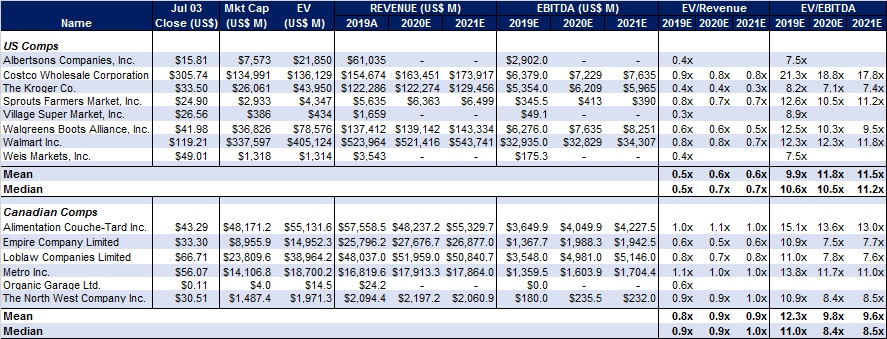
COVID 19 Impact on Food Retail Industry
The coronavirus outbreak wreaked havoc on retail business operations in the U.S. and Canada, big names like Aldo, J Crew, Neiman Marcus, FoodFirst filed for bankruptcy. The restaurant industry took a hard hit, barely surviving by focusing on takeout.
However, sales exploded in the Retail Food Industry when the outbreak led to unprecedented demand for goods in the grocery and food retail sector as more people stayed in and cooked more.
Albertsons witnessed sales surges in March and April as revenue was up 34% compared with the same period last year.
In Canada, by mid-March, grocery sales had increased 38% compared to their average sales in 2019 (see chart 1).
CHART 1: Weekly Percent Change in Sales for Select Grocery Retailers, Relative to Average 2019
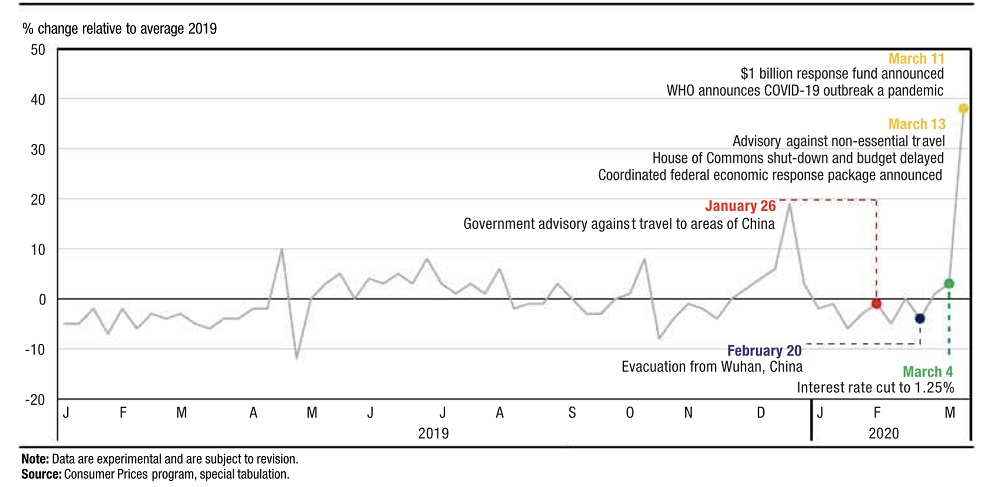
Online Grocery Shopping: The New Normal?
American retail giants Amazon (NASDAQ: AMZN) and Walmart (NYSE: WMT) transformed the world of grocery shopping with digital sales while other companies have struggled to keep up.
Social and physical distancing necessitated by the coronavirus outbreak changed consumption habits. As consumers were looking for safer and faster ways to fill up their fridges, they embraced grocery shopping in a way they haven’t before.
Grocery chains had to expand their eCommerce offerings to keep up with demand.
- Walmart same store sales grew by 10% and its digital sales rose by 74% in the first quarter of 2020.
- Kroger, the largest U.S. supermarket chain, saw a 92% increase in their digital sales. Revenue in the first quarter rose to $41.6 billion from $37.0 billion the previous year.
- During a conference call with analysts a day before the IPO, Albertsons said e-commerce sales for the eight weeks ending April 25 grew 243%, compared with the same period last year. In March, the year-over-year increase in online sales was 109%; in April, the gain was 374%.
As revenues exploded, fueled by digital sales, workforce and labour costs also grew exponentially during the pandemic.
Grocery chains massively hired to stock the shelves, serve customers and keep the stores sanitized.
In an industry with extremely small margins and rising labor costs, will the Food Retail Companies be able to sustain the growth experienced in the first quarter of 2020?
//



